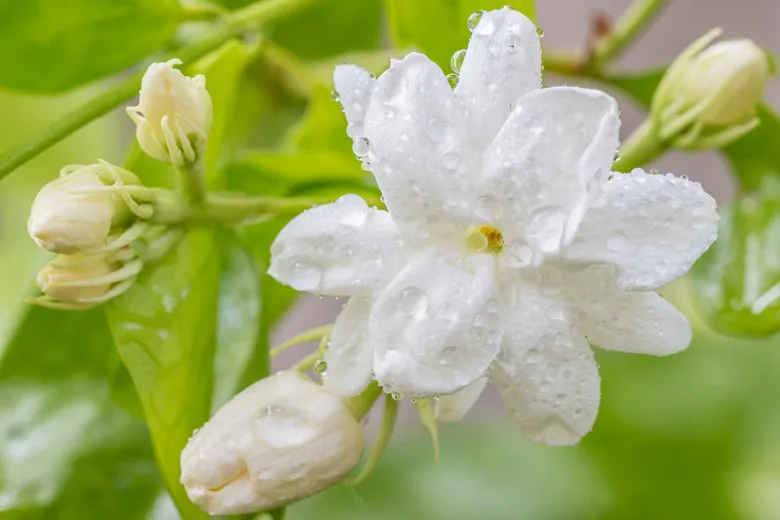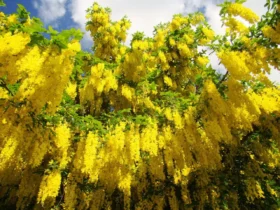Jasminum sambac, commonly known as Arabian Jasmine, is a highly fragrant and esteemed plant known for its use in flavoring jasmine tea and its beautiful white flowers.

Here are the key features and care guidelines for this wonderful shrub:
Description:
- Arabian Jasmine is an evergreen shrub that twines or scrambles, producing glossy dark green leaves.
- The plant’s most distinctive feature is its exceptionally fragrant waxy white flowers, each about 1 inch (2.5 cm) in diameter. These flowers are renowned for their enchanting fragrance and can add a delightful aroma to gardens and indoor spaces.
- The flowers are typically pure white but gradually fade to pink as they mature. They appear in clusters of 3 to 12 blossoms.
- Flowering occurs throughout the summer and is especially prolific in warm climates. In Hawaii, the blossoms are often used to create traditional leis.
Size and Growth Habit:
- Arabian Jasmine can grow to a height and width of 6 to 10 feet (180 to 300 cm).
- It can be grown as a twining, shrubby vine with support or as a sprawling shrub without any support.
Cultural Requirements:
- Arabian Jasmine thrives in full sun to part shade conditions.
- It prefers loose, humusy, evenly moist, and well-drained soils. During the summer growing season, ample watering is essential to maintain its health and vigor. However, reduce watering in the winter months.
- The plant is a favorite for its fragrance, and it’s virtually pest-free. However, keep an eye out for potential pests like aphids and mealybugs.
Benefits and Uses:
- The exquisite fragrance of Arabian Jasmine makes it a valuable addition to gardens and outdoor spaces.
- It can be used as a container plant on patios or decks during the summer months, and in colder climates, it can be brought indoors for the winter.
Maintenance and Care:
- Prune Arabian Jasmine as needed to maintain its desired shape.
- The plant can be propagated through semi-ripe cuttings during the summer or by layering in the autumn.
Origins and Significance:
- Arabian Jasmine is native to tropical Asia and is highly valued for its use in flavoring jasmine tea, a popular beverage in many cultures.
- The plant’s enchanting fragrance and versatile growth habit make it a cherished ornamental plant in gardens, landscapes, and cultural traditions.
In summary, Jasminum sambac (Arabian Jasmine) is a cherished plant known for its fragrant white flowers and its role in flavoring jasmine tea. With its lush green foliage, elegant blossoms, and enchanting fragrance, Arabian Jasmine brings beauty and sensory delight to gardens, patios, and indoor spaces alike. Its versatility, ease of care, and historical significance in culinary and cultural contexts make it a cherished addition to horticulture and everyday life.








